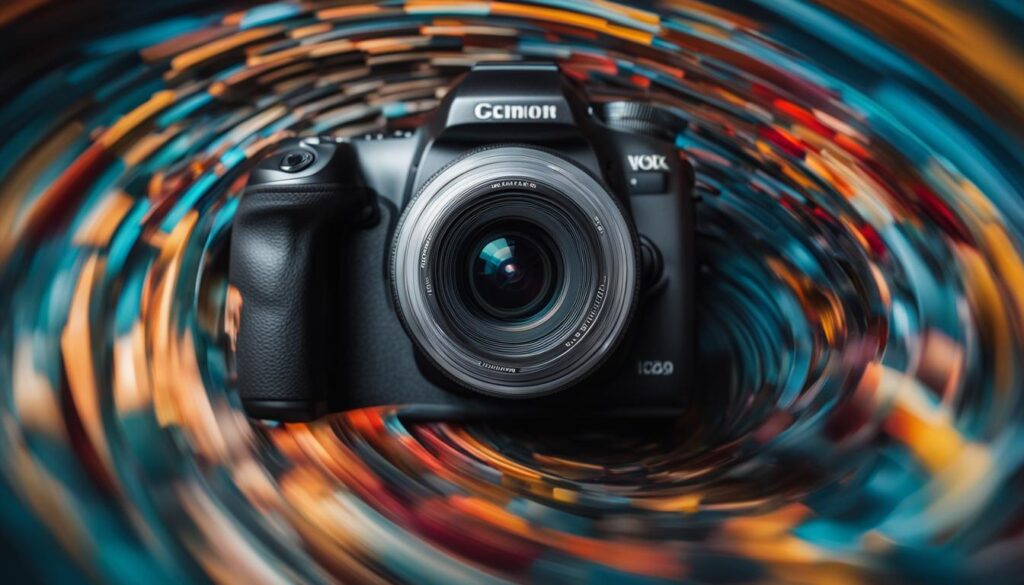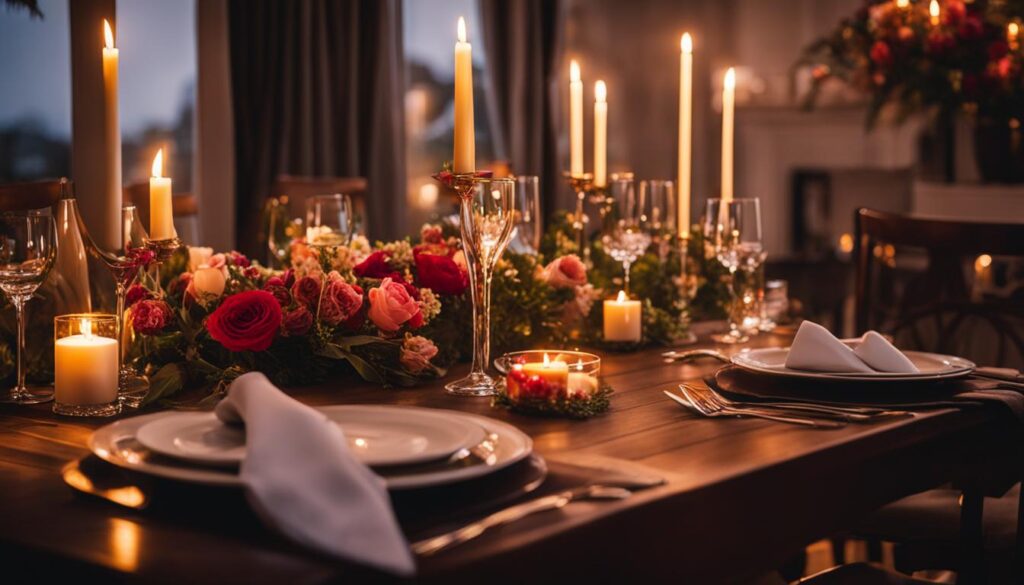We may earn money or products from the companies mentioned in this post.
Photography is more than just capturing a moment. It’s an art form that allows for self-expression and creativity. One of the most exciting aspects of photography is the diverse range of styles and techniques available to photographers. Understanding different photography styles is essential to elevating your skills and creating visually captivating photographs.
In this section, we will explore the various photography styles available to photographers. We’ll cover the characteristics and techniques associated with each style and provide examples of popular photography styles.
Key Takeaways
- Photography offers a multitude of creative avenues for photographers to explore, including different styles and techniques.
- Understanding different photography styles is essential to elevating your skills and creating visually captivating photographs.
- Popular photography styles include contemporary, traditional, modern, artistic, and experimental photography.
- By experimenting with different techniques and finding inspiration in various styles, you can develop your unique approach to photography.
- Mastering the art of photography requires continuous learning and exploration of different styles.
Contemporary Photography Styles
Contemporary photography styles encompass the latest trends and techniques in the field, offering photographers a wide range of creative possibilities. These styles often challenge traditional norms and push boundaries, resulting in visually striking and experimental compositions.
One of the key characteristics of contemporary photography styles is minimalistic aesthetics. This style involves stripping down images to their bare essentials, focusing on composition and negative space. Minimalistic photography is often monochromatic, relying on shades of black and white to convey a sense of simplicity and elegance.
“Simplicity is the ultimate sophistication.”
-Leonardo da Vinci
Another contemporary photography style is street photography. This style captures candid and unposed moments of everyday life, often in urban environments. Street photography aims to document the world as it is rather than staged or artificial scenes. This style requires quick reflexes and a keen eye for interesting moments.
Experimental photography is also a contemporary style that encourages photographers to think outside the box and challenge the limitations of the medium. This style often involves incorporating non-photographic elements into images, such as drawings or digital manipulation. The goal of experimental photography is to create unique and visually striking images that push the boundaries of traditional photography.
| Characteristics of Contemporary Photography Styles | Examples |
|---|---|
| Minimalistic aesthetics | Black and white compositions, negative space |
| Street photography | Candid moments, urban environments |
| Experimental photography | Digital manipulation, non-photographic elements |
Contemporary photography styles offer photographers a wealth of creative opportunities to explore and experiment with. From minimalistic compositions to experimental techniques, these styles challenge traditional norms and push the boundaries of what is possible with photography. By understanding and incorporating contemporary styles into your photography, you can create stunning and visually captivating images that stand out in today’s crowded digital landscape.
Traditional Photography Styles
Traditional photography styles have roots in classic techniques and aesthetics dating back decades. Photographers use these styles to capture timeless beauty and evoke a sense of nostalgia.
One example of traditional photography style is black and white photography, which removes colors to highlight light, contrast, and composition. This technique has been prevalent since the advent of photography in the 19th century and still charms the viewers today.
Another traditional photography style is portrait photography, which focuses on capturing the subject’s personality, mood, and character. Portrait photography is often used in family photography, high school yearbooks, and professional headshots.
Landscape photography is also a traditional style that captures the beauty of nature, from mountains, rivers, forests, and beaches. In landscape photography, photographers usually use a wide-angle lens and capture vast landscapes and colors in vivid detail.
Comparison between Traditional and Contemporary Styles
| Traditional | Contemporary |
|---|---|
| Focus on timeless beauty | Push boundaries and challenge norms |
| Emphasize light and composition | Experiment with unconventional techniques |
| Perfection through practice and repetition | Imperfection as an art form |
| Simple and elegant | Vibrant and experimental |
As shown in the table above, traditional and contemporary styles have distinct differences. While traditional photography emphasizes timeless beauty and perfecting techniques, contemporary styles push the boundaries and challenge traditional norms.
However, it is essential to note that photographers often use a fusion of traditional and contemporary techniques to create unique styles and images. As a photographer, it is essential to understand different photography styles to enhance your skills, create your unique approach, and deliver captivating photographs that stand out.
Modern Photography Styles
Modern photography styles are a reflection of the latest advancements in technology, equipment, and techniques. These styles use innovative approaches to capture dynamic and visually striking images that break away from conventional norms. The goal of modern photography is to create images that are both aesthetically pleasing and technically proficient.
Characteristics
Modern photography styles emphasize the use of high-tech equipment and editing software to enhance the visual appeal of the images. These styles often incorporate complex compositions that challenge traditional notions of photography. The use of vibrant colors, unusual angles, and experimental lighting is also a common characteristic of modern photography.
Approaches
Modern photography styles use a variety of approaches to create visually stunning images. Some of the techniques employed include:
- High Dynamic Range (HDR): This technique involves merging multiple exposures of the same scene to create an image with a wide range of colors and tones.
- Long Exposure: This approach involves using a slow shutter speed to capture motion and create dynamic visual effects.
- Minimalism: This style emphasizes simplicity and uses negative space to create a visually striking composition.
- Composite: This technique involves combining multiple images to create a single, seamless photograph.
These approaches are just a few examples of the many techniques used in modern photography. Exploring and experimenting with different techniques can lead to the development of a unique and personalized approach to photography.
“In the digital age, it is important for photographers to stay up-to-date with the latest trends and techniques. Incorporating modern photography styles into your work can help you stand out in a crowded field and create images that truly capture the imagination.”
Overall, modern photography styles are a reflection of the constant evolution of the medium. By using innovative techniques and approaches, photographers can create stunning images that push the boundaries of traditional photography. Whether you’re a professional photographer or just starting out, incorporating modern photography styles into your work can help you develop a unique and captivating style.
Artistic Photography Styles
In the world of photography, artistic photography styles offer a unique avenue for photographers to express their creativity and capture images that transcend the traditional norms of the medium. These styles often incorporate elements from other art forms, such as painting, sculpture, and graphic design, to create visually stunning and thought-provoking images. Let’s take a closer look at some of the most popular artistic photography styles.
Abstract Photography
Abstract photography involves capturing images that are not easily identifiable or recognizable as a specific object or scene. Instead, abstract photography focuses on the shape, color, texture, and other visual elements of the image to create a unique and visually engaging composition. Abstract photographers often play with lighting, focus, and composition to create images that are both intriguing and aesthetically pleasing.
Conceptual Photography
Conceptual photography focuses on capturing images that convey a specific idea, message, or emotion. Often, the underlying concept or theme of the image is more important than the actual subject matter. Conceptual photographers use various techniques, such as symbolism, surrealism, and photo manipulation, to convey their message and create powerful and thought-provoking images.
Fine Art Photography
Fine art photography seeks to capture images that are aesthetically pleasing and have value as works of art. Fine art photographers often focus on composition, lighting, and color to create images that evoke emotion and tell a story. Fine art photography can include a wide range of subjects, from landscapes and wildlife to portraits and still life.
Photojournalism
Photojournalism is a form of artistic photography that focuses on capturing images that tell a story or convey a message about current events or social issues. Photojournalists work for newspapers, magazines, and other media outlets to capture images of newsworthy events, such as protests, wars, and disasters. The goal of photojournalism is to provide a visual representation of current events that can inform and inspire viewers.
Artistic photography styles are a way for photographers to express their creativity and capture images that truly stand out. By experimenting with different techniques and approaches, you can find your own unique artistic style and create images that evoke emotion, tell a story, and make a lasting impact.
Experimental Photography Styles
Experimental photography styles encourage photographers to push boundaries and explore unconventional techniques and concepts. By breaking away from traditional norms, photographers can create visually stunning and thought-provoking images that captivate the viewer.
One experimental photography style is “light painting,” which involves using a long exposure and moving a light source around the subject to create unique and abstract patterns. This technique requires patience and experimentation to achieve the desired effect, but the results can be breathtaking. Another experimental technique is “double exposure,” which involves exposing the same frame of film multiple times to create a layered and surreal image.
Photographers can also experiment with different types of cameras and lenses to achieve unique and unexpected results. For example, using a pinhole camera can create dreamlike and otherworldly images, while using a fisheye lens can distort reality and create a sense of movement.
Comparing Experimental Photography Styles
| Technique | Description | Example |
|---|---|---|
| Light Painting | Using long exposures and a moving light source to create abstract patterns. |  |
| Double Exposure | Exposing the same frame of film multiple times to create a layered and surreal image. |  |
| Pinhole Cameras | Using a camera with a tiny hole instead of a lens to create dreamlike and otherworldly images. |  |
| Fisheye Lens | Using a lens that distorts reality and creates a sense of movement. |  |
Experimentation is key in the world of experimental photography. By trying out different techniques, tools, and methods, photographers can discover their own unique style and push the boundaries of what is possible with a camera.
In the next section, we will explore popular photography styles that have stood the test of time and continue to captivate audiences.
Popular Photography Styles
Photography has evolved over the years, and there are now numerous styles to choose from. Some styles have stood the test of time and have become popular among photographers and enthusiasts alike. In this section, we will take a closer look at some of the most popular photography styles, their distinguishing characteristics, and the techniques used to achieve their unique aesthetic.
Landscape Photography
Landscape photography involves capturing vast, natural scenery, such as mountains, rivers, and forests. It often focuses on the beauty and magnificence of nature, with the goal of creating visually stunning images that evoke a sense of awe and wonder in the viewer. Techniques such as the rule of thirds, leading lines, and color theory are often used to create impactful compositions.
Portrait Photography
Portrait photography revolves around capturing the beauty and essence of the human subject. It can range from formal studio portraits to candid shots, and is often used for professional headshots, family photos, and social media profiles. Techniques such as lighting, posing, and composition are critical to creating impactful and engaging portraits.
Street Photography
Street photography involves capturing candid snapshots of everyday life in urban environments. It often showcases the raw and unfiltered reality of the city, from the people to the architecture and culture. Street photographers often rely on their intuition, quick reflexes, and the ability to anticipate and capture the perfect moment to create impactful and authentic images.
Black and White Photography
Black and white photography has a timeless charm and elegance, often invoking a sense of nostalgia and classic beauty. It can be used in various styles, including landscape, portrait, and street photography. Black and white images often rely on contrast and texture to create visually striking and emotive pictures.
Abstract Photography
Abstract photography involves breaking away from conventional reality and capturing images that are often difficult to understand at first glance. It often involves experimenting with various techniques, such as motion blur, long exposures, and unique angles. The goal is to create images that challenge the viewer’s perception and evoke a sense of curiosity and intrigue.
Comparison of Popular Photography Styles
| Photography Style | Distinguishing Characteristics | Techniques Used |
|---|---|---|
| Landscape Photography | Focuses on natural scenery and beauty | Rule of thirds, leading lines, color theory |
| Portrait Photography | Focuses on human subjects | Lighting, posing, composition |
| Street Photography | Captures candid snapshots of everyday life in urban environments | Intuition, quick reflexes, anticipation |
| Black and White Photography | Timeless charm and elegance | Contrast, texture |
| Abstract Photography | Captures images that challenge conventional reality | Motion blur, long exposures, unique angles |
As you can see, each photography style has its unique characteristics and techniques. Understanding these styles can help you develop your own unique approach and elevate your photography skills. Experimenting with different styles and techniques can help you find your niche and unleash your creativity.
Conclusion
Photography styles offer a spectrum of creative opportunities for photographers to explore and master. By comprehending different styles, photographers can develop their unique approach and capture visually captivating photographs. Experimenting with various techniques, seeking inspiration from both traditional and contemporary styles, and unleashing creativity can elevate photography skills and produce breathtaking images.
Therefore, understanding the diversity of photography styles is essential for both beginner and experienced photographers. From contemporary styles that break away from conventional norms to traditional styles that evoke a sense of nostalgia, photographers can explore characteristics and techniques associated with each style. Artistic and experimental styles can further blur the boundaries of photography and challenge the limitation of the medium.
Master the Art of Photography Styles
Among the different photography styles, popular photography styles have stood the test of time, gaining recognition and becoming favorites among photographers and enthusiasts. From landscape to portrait photography, popular styles continue to capture attention. By exploring different photography styles, photographers can refine their skills, find their niche, and produce outstanding images. The possibilities are endless, and the results can be extraordinary.
Ultimately, photography styles offer a window of creative expression and an opportunity to refine skills and produce visually stunning images. Therefore, it’s crucial to delve into different photography styles, experiment with techniques, and let creativity soar. Mastering the art of different photography styles can enrich a photographer’s portfolio, expand their knowledge base, and elevate their career.
FAQ
What are photography styles?
Photography styles refer to the various techniques and aesthetics that photographers use to create visually captivating images. These styles encompass different approaches, such as contemporary, traditional, modern, artistic, experimental, and popular photography styles.
Why is it important to understand different photography styles?
Understanding different photography styles is essential for photographers at all skill levels. It allows you to expand your creative repertoire, learn new techniques, and develop your own unique approach. By exploring different styles, you can enhance your photography skills and create images that stand out.
What are contemporary photography styles?
Contemporary photography styles encompass the latest trends and techniques in the field. These styles often focus on experimentation, minimalistic compositions, and vibrant aesthetics. They push boundaries and challenge traditional norms, allowing photographers to create visually striking and innovative images.
What are traditional photography styles?
Traditional photography styles draw inspiration from classic techniques and aesthetics. These styles often evoke a sense of nostalgia and aim to capture timeless beauty. They utilize composition and lighting techniques that have stood the test of time, creating images with a classic and elegant feel.
What are modern photography styles?
Modern photography styles incorporate innovative techniques and technologies to capture dynamic and visually striking images. These styles often break away from conventional norms and embrace high-tech editing and experimental compositions. Modern photography styles encourage photographers to embrace new advancements and push the boundaries of what is possible in photography.
What are artistic photography styles?
Artistic photography styles emphasize creativity and self-expression. These styles often blur the line between photography and other art forms, such as painting or sculpture. Artistic photographers use various techniques, such as manipulation, mixed media, and creative editing, to infuse their images with artistic flair and showcase their unique vision.
What are experimental photography styles?
Experimental photography styles push the boundaries of traditional photography by exploring unconventional techniques and concepts. These styles encourage photographers to think outside the box and challenge the limitations of the medium. Experimental photographers often use alternative processes, unusual subjects, or unique perspectives to create thought-provoking and visually arresting images.
What are popular photography styles?
Popular photography styles have gained widespread recognition and are favorites among photographers and enthusiasts alike. These styles, such as landscape photography, portrait photography, street photography, and documentary photography, have stood the test of time and continue to capture attention. They often have distinct characteristics and techniques that define their appeal.
How can understanding different photography styles enhance my photography skills?
Understanding different photography styles allows you to broaden your creative horizons, learn new techniques, and develop your own unique style. By exploring various styles, you can gain inspiration, expand your technical abilities, and bring a fresh perspective to your images. This understanding enables you to elevate your photography skills and create captivating images that leave a lasting impact.
Affiliate Disclosure: This post may contain affiliate links. If you purchase through our link, we may receive a small commission, but at no additional cost to you. For more information, please see our Disclosure statement.



